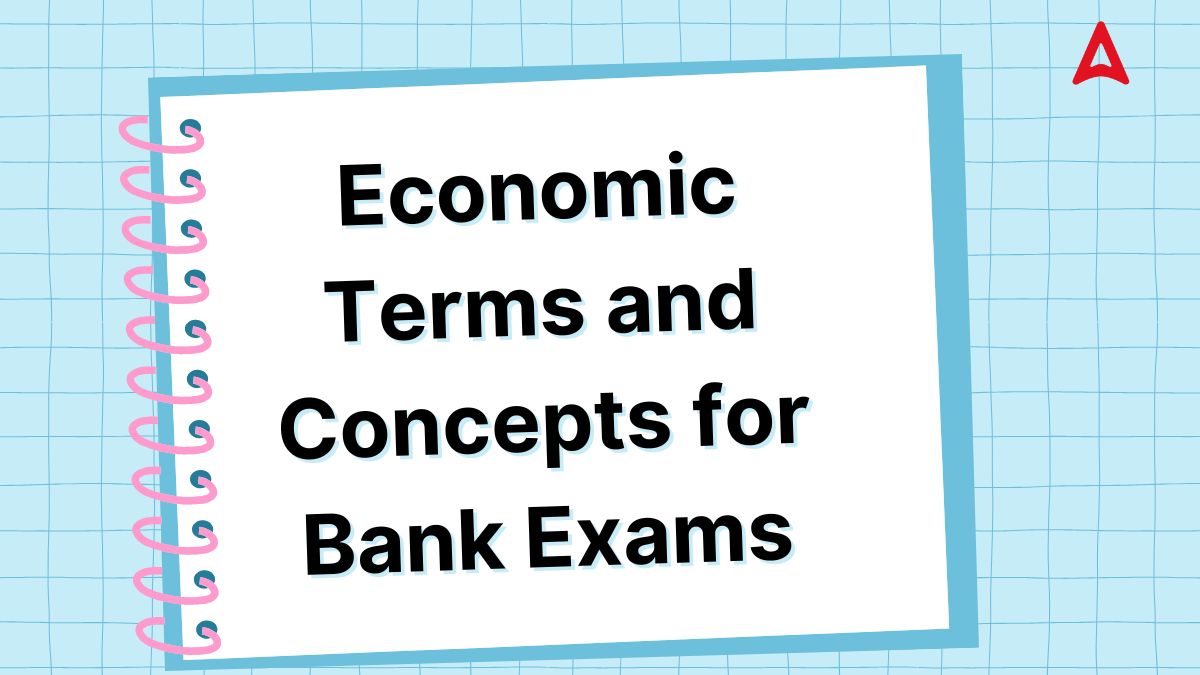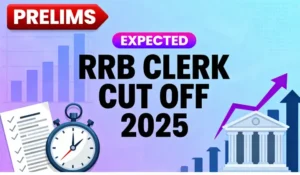Understanding key economic terms and concepts is crucial for success in bank exams such as IBPS, SBI, RBI, and other regulatory body recruitments. These exams often test a candidate’s awareness of financial systems, economic policies, and current economic trends. Whether it’s inflation, GDP, fiscal deficit, or monetary tools, a strong grip on such topics helps in answering both objective questions and interview-related queries. A solid foundation in economics not only boosts your exam score but also enhances your confidence during discussions and group exercises.
Economic Terms and Concepts for Bank Exams
Many of these economic terms are connected to topics like inflation, GDP, monetary policy, fiscal policy, demand and supply, and the role of institutions like RBI and IMF. Questions in bank exams often test your understanding of how these terms apply in real-world banking and financial situations. Knowing these concepts not only helps in scoring well in the mains exam but also boosts your confidence during interviews, where current economic issues are often discussed.
1. GDP (Gross Domestic Product):
It is the total value of all goods and services produced within a country in a specific period. It shows the overall economic health of a nation.
2. Inflation:
It refers to the rise in the general price level of goods and services over time. High inflation reduces the purchasing power of money.
3. Deflation:
A decrease in the general price level of goods and services. It usually indicates weak demand in the economy.
4. Fiscal Policy:
The use of government spending and taxation to influence the economy. It is managed by the Ministry of Finance.
5. Monetary Policy:
The process by which the central bank (RBI in India) controls money supply and interest rates to maintain price stability and growth.
6. Repo Rate:
The rate at which the RBI lends money to commercial banks. It is used to control inflation and liquidity.
7. Reverse Repo Rate:
The rate at which the RBI borrows money from commercial banks. It helps in managing money supply in the economy.
8. CRR (Cash Reserve Ratio):
The percentage of total deposits that banks must keep as reserves with the RBI. It helps in controlling liquidity.
9. SLR (Statutory Liquidity Ratio):
The percentage of total deposits that banks must keep in the form of liquid assets like gold or government securities.
10. Demand and Supply:
Demand is the willingness of consumers to buy goods at a given price. Supply is the quantity of goods available for sale. Prices are influenced by the balance between the two.
11. Budget Deficit:
It occurs when government expenditure exceeds its revenue. A high budget deficit can affect economic stability.
12. Balance of Payments (BoP):
It is a record of all economic transactions between residents of a country and the rest of the world in a specific period.
13. Foreign Direct Investment (FDI):
Investment by a foreign entity in the business or production in another country. It helps in improving capital flow and employment.
14. NPA (Non-Performing Asset):
A loan or advance for which the principal or interest payment is overdue for 90 days or more. High NPAs are a concern for banks.
15. Base Rate:
The minimum rate set by the RBI below which banks are not allowed to lend to customers. It ensures transparency in lending.
Tips to Remember Economic Terms Easily
Grasping economic terms can be tricky at first, but with the right approach, you can remember them effectively and apply them confidently during bank exams. These tips are designed to help you recall definitions, understand applications, and retain concepts long-term:
- Relate Terms to Real-Life Scenarios: Connect abstract terms like inflation, fiscal deficit, or GDP to everyday examples, like rising prices in markets or government budget announcements.
- Use Mnemonics and Acronyms: Create short memory aids. For instance, “CRR” stands for “Cash Reserve Ratio”—you can remember it as “Cash Required Reserve.”
- Visual Learning: Watch videos or draw simple flowcharts to understand processes like how monetary policy affects inflation.
- Make Flashcards: Prepare digital or physical flashcards for quick revision of definitions and related facts. Apps like Anki or Quizlet can be helpful.
- Teach Someone Else: Explaining a term to a friend or even to yourself aloud reinforces the concept and highlights any gaps in your understanding.
- Group Similar Concepts: Learn related terms together—like monetary policy, repo rate, and reverse repo rate—to understand how they interconnect.
- Revise Regularly: Repetition is key. Revisit economic terms every few days so they move from short-term to long-term memory.
- Use News and Articles: Read financial newspapers or reliable economic websites. Seeing terms used in current events strengthens understanding and retention.




 GA Capsule for SBI Clerk Mains 2025, Dow...
GA Capsule for SBI Clerk Mains 2025, Dow...
 The Hindu Review October 2022: Download ...
The Hindu Review October 2022: Download ...
 IBPS RRB Clerk Expected Cut off 2025, Ch...
IBPS RRB Clerk Expected Cut off 2025, Ch...







